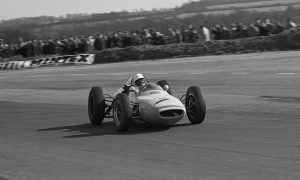
MANUFACTURING OF PARTS
Once the mould has been produced, the part can be manufactured with highly qualified personnel carefully placing and superposing carbon-fibre sheets inside the mould. A laser-guided system helps with the positioning and folding of the sheets (see the thin green lines on the images above).
After this stage, the laminated component is wrapped up in a vacuum bag, still inside the mould, which is then placed in an autoclave. F1 factories usually have two or three autoclaves where components can be cured under high pressure and temperatures.

© Renault F1
In order to strengthen the composite parts, these are built in a sandwich structure. A honeycomb core, made of aluminium or aramid (usually Nomex), is sandwiched in between two composite skins, whose thickness levels vary according to need.
The locations where the fasteners go through the honeycomb core (for the suspension for instance) are made sturdier with metal or composite inserts, aimed at spreading the loads over bigger surfaces.

© Renault F1
For the sophisticated parts that require the assembly of several components, teams follow a set of very thorough procedures to apply adhesive bonding.
The monocoque, for instance, is produced by bonding the upper and lower parts together after two internal bulkheads were added.

© Renault F1, Mercedes & Breton
Finally, the orifices needed for the fasteners, wiring loom, etc. are machined through the monocoque with a 5-axe milling machine, based on the CAD file.







